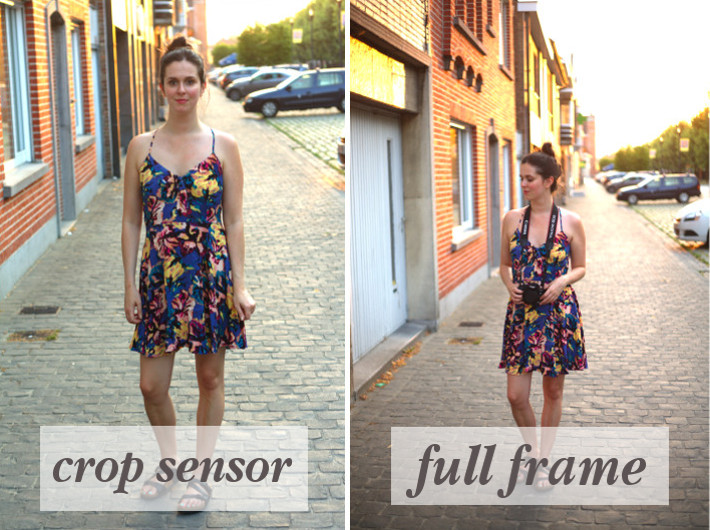
However, smaller sensors do see a smaller cropped view from it than a larger sensor would see. For example, a 28 mm lens delivers a moderately wide-angle FOV on a 35 mm format full-frame camera, but on a camera with a 1.6 crop factor, an image made. If the lens is 150-600 mm, it is ALWAYS 150-600 mm.
CROP LENS ON FULL FRAME FULL
The Equivalent Focal Length ONLY applies to the full frame camera. A crop sensor lens is designed for crop sensor cameras (APSC). It does NOT apply to your cropped sensor body. When using a 50mm lens on a full-frame camera, the real focal length is 50mm, but when using on a crop sensor camera, the APS-C has a 1.5x multiplying. If you don't have experience with full frame cameras, then this Equivalent Focal Length has no meaning to you.

The purpose of this Equivalent Focal Length merely tells them what field of view to expect from the new digital camera with the smaller sensor, in full frame terms that they understand. Users with years of experience with full frame 35 mm film cameras know the field of view expected from various focal lengths. Equivalent focal length is a comparison which corresponds to the lens, due to sensor size, but it only applies to the full frame sensor body. My mm f/ lens, on a sensor, is equivalent to a 157.5mm f/2.1 lens. Just enter the focal length and maximum aperture of your lens and then choose a sensor size. A smaller sensor simply crops a smaller view.Ĭrop factor is about the sensor size, and it is about the field of view, but crop factor is NOT about the lens. Get the full-frame (35mm) equivalent focal length and aperture for different sensor sizes. The lens does what it always does, and the sensor size sees what it always sees. Lesser distortion than a crop-frame lens is another huge advantage.
CROP LENS ON FULL FRAME FULL SIZE
The "Equivalent Focal Length" only apples to the full size sensor. A full frame camera offers a wider focal length more easily. the only issue is that a cropped sensor size sees a smaller field of view. The field of view is also determined by the sensor size. That actual meaning of this 1.6 crop factor is only that your 55-250 mm lens on the cropped sensor body has the same field of view as a camera with full sensor would see with a 88-400 mm lens (because its sensor is larger, seeing a wider view, so needing a 1.6x longer lens to reduce the full frame field of view back to what the smaller sensor would see). It has been said that "your 55-250 mm has the same field of view as a 88-400", but that is very incomplete which causes us confusion if said that way.

What does change is that the body with a smaller sensor sees a smaller field of view, because the smaller sensor crops the view to be smaller. This means your cameras APS-C-size sensor. The sensor size cannot affect what the lens actually does, but a smaller sensor can only see a smaller crop of it. When you mount a full-frame lens on a camera with an APS-C sensor you will get what is called a crop factor. If it is a 150-600 mm lens, it is always a 150-600 mm lens on any camera body.

Crop factor does NOT affect the lens in any way. Get the full-frame (35mm) equivalent focal length and aperture for different sensor sizes.


 0 kommentar(er)
0 kommentar(er)
